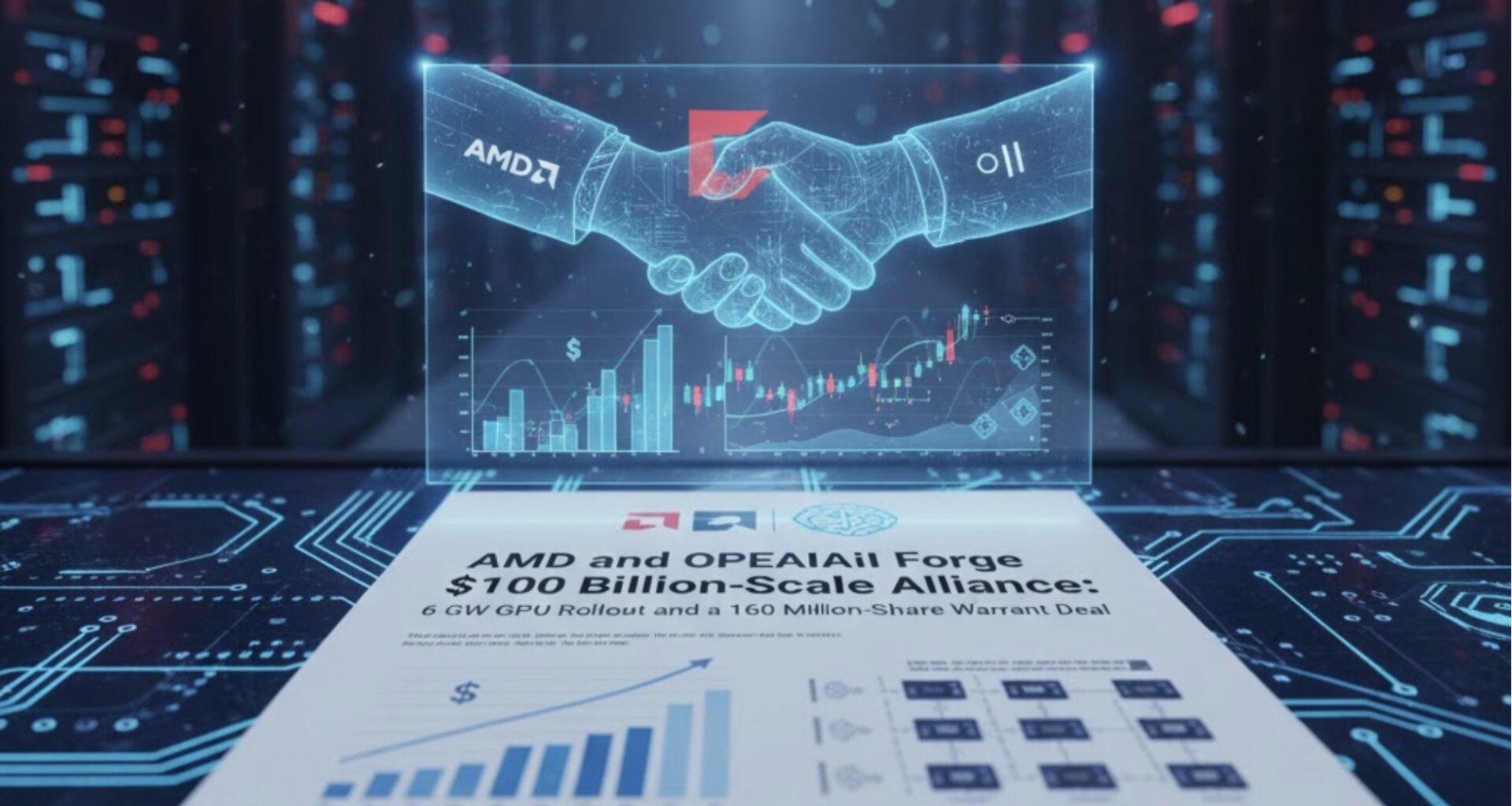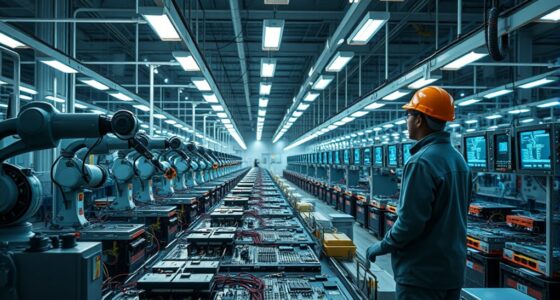In a landmark partnership that reshapes the future of AI compute, AMD and OpenAI have announced a strategic alliance that will deliver up to 6 gigawatts of GPU power to fuel OpenAI’s next-generation models. The deal includes an innovative equity component: OpenAI receives warrants to purchase up to 160 million AMD shares—roughly 10% of the company—based on performance and delivery milestones.
A Compute-for-Equity Blueprint
Rather than a conventional supply contract, the AMD-OpenAI arrangement is effectively a compute-for-equity exchange. OpenAI secures guaranteed access to AMD’s upcoming Instinct MI450 accelerators, while AMD gains long-term alignment with one of the most powerful AI labs on the planet.
The partnership begins with a 1 GW deployment of MI450 chips in the second half of 2026, scaling up to the full 6 GW as infrastructure ramps. Each tranche of GPU deliveries will unlock portions of the equity warrants, which are also tied to AMD’s stock-price milestones.
The design ensures that both companies profit from success: AMD from stock appreciation and market share, OpenAI from hardware performance and upside equity value.
Why This Matters
This partnership represents a new template for high-capital AI infrastructure deals. Instead of raising billions in cash or locking into debt-heavy vendor financing, OpenAI effectively pays with future value—and AMD secures a customer that guarantees years of top-tier demand.
Analysts have called it “Silicon for Shares”—a model that may inspire other chipmakers to offer hybrid equity-plus-compute deals as hyperscale AI demand pushes past traditional financing limits.
Wall Street has responded with enthusiasm: AMD’s shares jumped over 30 percent following the announcement, as investors recognized the deal’s potential to close the gap with NVIDIA’s datacenter dominance.
The Strategic Stakes
For AMD, the partnership does three things:
- Validates its technology roadmap — positioning the MI450 as a true alternative to NVIDIA’s Hopper and Blackwell platforms.
- Anchors a flagship customer — ensuring continuous utilization of AMD’s supply chain and data-center partnerships.
- Signals deep confidence — OpenAI’s choice of AMD underlines trust in its silicon roadmap, packaging, and AI software stack (ROCm, Triton, and PyTorch optimizations).
For OpenAI, the move diversifies compute risk beyond NVIDIA, stabilizing access to massive GPU capacity at predictable cost. With global GPU shortages and escalating model-training budgets, having multi-vendor supply is now a survival strategy.
The Road to 2026 and Beyond
The rollout begins in H2 2026, when AMD’s MI450 systems come online. Each gigawatt-class cluster represents tens of thousands of GPUs, and the total 6 GW target would rival entire national compute programs.
If fully executed, this deployment would make AMD’s footprint in AI datacenters the largest in its history—potentially generating tens of billions of dollars in hardware and service revenue over the decade.
Meanwhile, the warrant structure means that OpenAI’s upside could be worth tens of billions if AMD’s share price continues to climb—effectively giving the AI company a direct stake in its hardware supplier’s success.
A Shift in the AI Infrastructure Era
The AMD-OpenAI alliance signals an emerging truth: the AI arms race is no longer about who can code the best model—it’s about who controls and finances the compute that makes those models real.
By linking capital, compute, and corporate equity, the partnership blurs the line between customer and investor. It’s a structure built for the trillion-dollar AI decade—and a signal that strategic hardware partnerships are evolving into full-stack financial ecosystems.
Sources: AMD IR filings, OpenAI press release, The Register, Reuters, The Guardian









